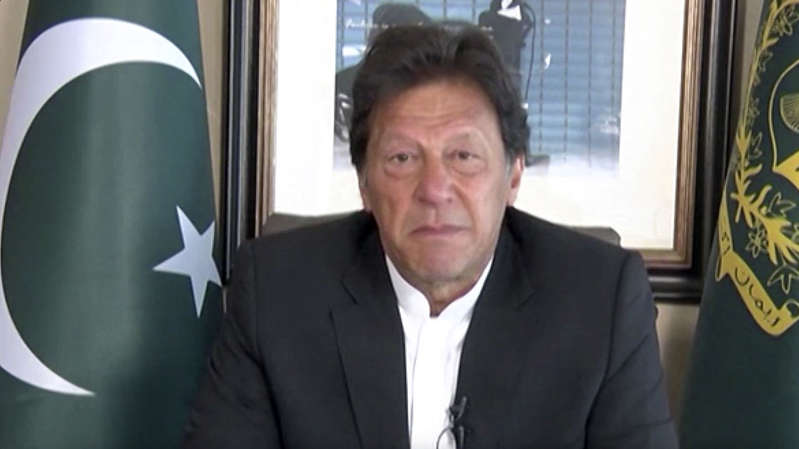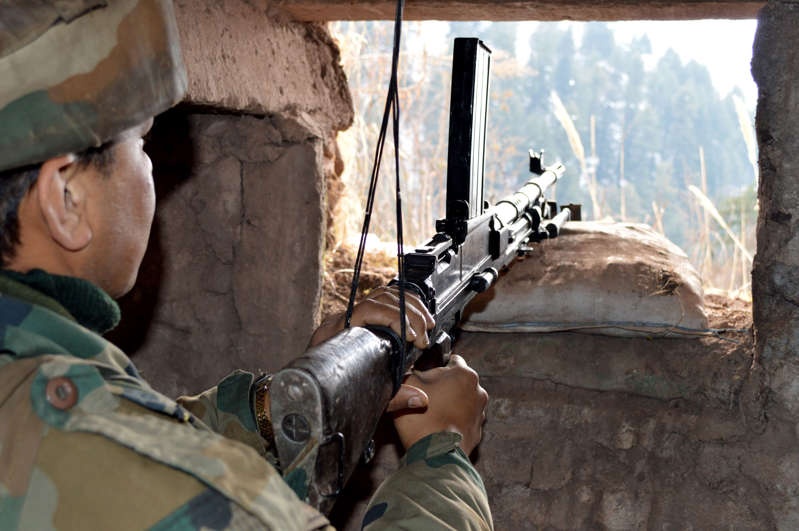by Arif Rafiq 3 March 2019

© AP Indian army soldiers near the wreckage of an Indian helicopter. Photo: AP
Make no mistake. The India-Pakistan crisis prompted by the February 14 militant attack on Indian paramilitary forces in Kashmir is far from over.
Even if the two countries have – for now – resisted escalating hostilities following air strikes on each other’s territories, the situation could scarcely be more serious. That two nuclear power states have engaged in military action against one another marks the first step along a path of escalation that – in a worst-case scenario – could result in the use of nuclear weapons.
A quick resolution to the dispute is unlikely. Instead, what we are likely to see is a prolonged stalemate over the coming weeks and perhaps months, as India heads toward general elections in the spring and expects Pakistan to take action against Jaish-e Muhammad (JeM) leader Masood Azhar, whose group claimed responsibility for the suicide bombing.

© AFP Masood Azhar, the chief of Jaish-e-Muhammad. Photo: AFP On Thursday, after Pakistani Prime Minister Imran Khan pledged to release a captured Indian air force pilot, Indian Prime Minister Narendra Modi addressed a domestic audience and projected a willingness to take the conflict further.
In apparent reference to an Indian air force incursion into Pakistani territory on Tuesday, he said: “After a pilot project is completed, it can be made scalable. A pilot project has been implemented. Now a real [project] must be done. The previous one was [just] practice.”

© Prime Ministry Office / Handout/Anadolu Agency/Getty Images ISLAMABAD, PAKISTAN – FEBRUARY 27: (—-EDITORIAL USE ONLY MANDATORY CREDIT – ‘Pakistan Prime Ministry Office / Handout’ – NO MARKETING NO ADVERTISING CAMPAIGNS – DISTRIBUTED AS A SERVICE TO CLIENTS—-) A screen grab captured from a video shows Prime Minister of Pakistan Imran Khan as he addresses to the nation on February 27, 2019. (Photo by Pakistan Prime Ministry Office / Handout/Anadolu Agency/Getty Images) These words may merely be part of a face-saving effort by a man whose party projected him as someone with a “56-inch chest” during the 2014 general elections. The myth of Modi as an economic reformer and strong leader has been dented, if not significantly damaged, in the aftermath of the demonetisation debacle and the February 14 attack.
Indian escalatory actions, crossing into Pakistani air space for the first time in almost 50 years, indicate the reputational pressures Modi perceives he is under. Either New Delhi did not forecast serious Pakistani actions – misjudging its ability to prevent an air strike by the Indian air force and retaliate to the incursion – or Modi’s kitchen cabinet concluded that the risks were worth it, given the need to look strong as elections near.

© Reuters Indians attend a candle light vigil to pay tribute to Central Reserve Police Force personnel killed when a suicide bomber rammed a car into the bus carrying them in south Kashmir. Photo: Reuters The exact role of the United States and other global and regional powers in preventing the crisis from worsening is unclear.
But US President Donald Trump hinted at an American role during a press conference in Hanoi this week. And US Secretary of State Mike Pompeo, as well some of his Gulf Arab counterparts, appear to have been in communication with Islamabad and New Delhi.
Continued ad hoc crisis diplomacy by great and regional powers is likely. Western countries plan to push forward sanctions at the United Nations Security Council against terrorist leader Azhar, further constraining his group’s ability to operate in Pakistan. The US, France, Britain, and India will press China not to block those sanctions. Regardless of whether the sanctions go ahead, Pakistan will have to take further action against JeM and other terrorist groups, given that it is currently on the grey list of the anti-terrorism Financial Action Task Force (FATF) and must implement its demands before another review this year.
Pakistani moves to comply with FATF and potential UNSC requirements may ultimately trigger meaningful de-escalation in the subcontinent. But conditions in Indian-occupied Kashmir are likely to continue, making the volatility endure.
India faces what is effectively a “people’s revolt” in the predominantly Muslim Kashmir Valley, with local civilians intervening during live Indian security operations targeting suspected militants, pelting Indian security personnel. Both the February 14 suicide attacker Ali Ahmad Dar, and the alleged purchaser of the vehicle used in the attack, Sajjad Bhatt, were locals who joined JeM after being abused by Indian security forces, their family members say.

© Reuters Pakistanis burn an effigy of Indian Prime Minister Narendra Modi after Pakistan shot down two Indian military aircraft, according to Pakistani officials. Photo: Reuters So even if Pakistan takes meaningful action against JeM, India’s brutal counter-insurgency campaign and almost unanimous local opposition to Indian rule both mean that the situation in the Kashmir valley will continue to fester. New Delhi is a driver of militancy in Kashmir, which has intensified under the Modi government’s “Operation All Out”.
In addition to street protests and militant violence, the public in the Kashmir valley made its opposition to New Delhi clear when turnout in last year’s municipal polls fell below 4 percent.
If world powers focus solely on counterterrorism, this will not address the underlying drivers of violence in Kashmir. And it puts Pakistan in an untenable situation in which it may be held responsible for major attacks in Indian-occupied Kashmir even if there are no direct links to actors in Pakistan.

© Nasir Kachroo/NurPhoto via Getty Images Photo taken on 14 Jan 2014: Amid the border skirmish with Pakistan, India has deployed more forces at the forward posts of the LoC. (Photo by Nasir Kachroo/NurPhoto via Getty Images) As a result, in the immediate term, the US, China, and other world and regional powers will have to sustain their efforts to manage the India-Pakistan crisis and reduce tensions between the two countries. But the tit-for-tat escalation witnessed this week is an indication of the need not just for crisis management, but also crisis prevention. A comprehensive dialogue between India and Pakistan, including on the future of Kashmir, is necessary after India holds general elections and a new government settles in. ■
Arif Rafiq is a non-resident fellow at the Middle East Institute in Washington and president of Vizier Consulting, LLC, a political risk advisory company
This article originally appeared on the South China Morning Post (SCMP), the leading news media reporting on China and Asia.
